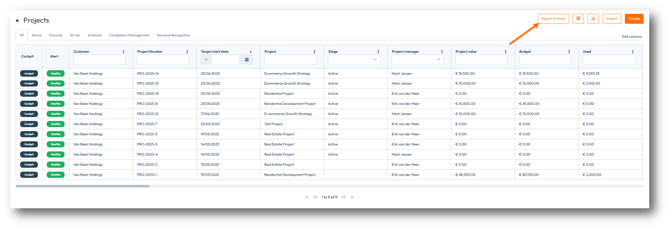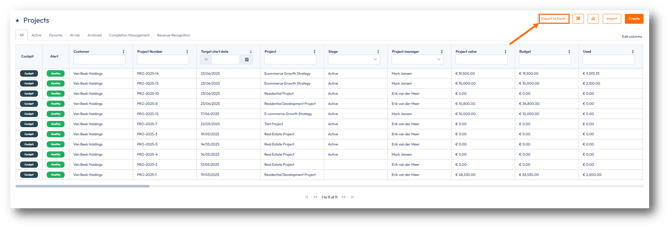Create a Project Report in PSOhub
Track project budgets, hours, and profitability with custom exports
Build a custom project report to track financials, effort and performance across all projects. Filter by status, project manager, type or business unit, choose the data you need and export to Excel for further analysis.
Navigate to the All Projects Page
Choose from the menu Projects and select Projects:

Filter and Customize the Report
Apply filters to narrow your report. These can be accessed at the top of the Grid:

To customize the columns, click on the Edit Columns button in the top-right corner:

Column Order Matters In Your Export
When exporting data from PSOhub, the order of the columns in your export file is based on the layout shown on-screen at the time of export. This means:
- If you’ve rearranged columns in your PSOhub list view, your export will reflect that custom order.
- Any hidden columns in your current view will not be included in the export.
- To ensure consistency across reports, set your preferred column order and visibility before exporting.
Export the Project Report
Click Export to Excel to download the report:

The Excel file will appear at the bottom of your browser. Click to open it:
The report will open in Excel.
Working with Excel-Formatted Fields
SUM() or AVERAGE() won’t work on them directly.- Budget (Excel)
- Used (Excel)
- Invoiced (Excel)
- Planned Hours (Excel)
- Estimated Profit (Excel)
- Actual Profit (Excel)
- Total Amount (Excel)
- Total Selling Total Estimated Pro. (Excel)
- Total Amount Actual Pro. (Excel)
- Deal Amount (Excel)

These fields are automatically formatted as numbers in your export, so you can perform calculations on them in Excel.
💡 Tip: Always use the “(Excel)” version of numeric fields when creating reports that involve currency, hours, or totals.

